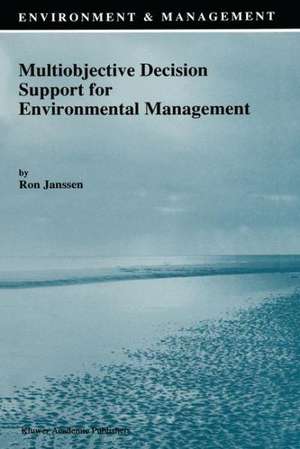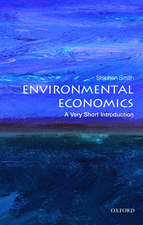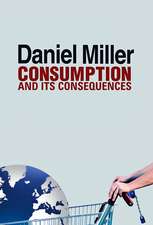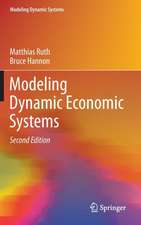Multiobjective Decision Support for Environmental Management: Environment & Management, cartea 2
Autor R. Janssenen Limba Engleză Paperback – 3 oct 2013
The author's work on MODSS has resulted in the development of a decision support package, called DEFINITE (DEcisions on a FINITE set of alternatives). A demonstration version of this programme is included with the book.
This Demo Disk can be run on a MS-DOS compatible personal computer (version 2.0 or higher) having a 3,5 inch, 720 Kb disk drive and 640 Kb available RAM.
Preț: 385.62 lei
Nou
Puncte Express: 578
Preț estimativ în valută:
73.79€ • 78.91$ • 61.52£
73.79€ • 78.91$ • 61.52£
Carte tipărită la comandă
Livrare economică 17 aprilie-01 mai
Preluare comenzi: 021 569.72.76
Specificații
ISBN-13: 9789401052474
ISBN-10: 9401052476
Pagini: 252
Ilustrații: XIII, 233 p.
Dimensiuni: 160 x 240 x 13 mm
Greutate: 0.36 kg
Ediția:Softcover reprint of the original 1st ed. 1992
Editura: SPRINGER NETHERLANDS
Colecția Springer
Seria Environment & Management
Locul publicării:Dordrecht, Netherlands
ISBN-10: 9401052476
Pagini: 252
Ilustrații: XIII, 233 p.
Dimensiuni: 160 x 240 x 13 mm
Greutate: 0.36 kg
Ediția:Softcover reprint of the original 1st ed. 1992
Editura: SPRINGER NETHERLANDS
Colecția Springer
Seria Environment & Management
Locul publicării:Dordrecht, Netherlands
Public țintă
ResearchCuprins
1. Introduction to Decision Support.- 1.1. A brief overview.- 1.2. Decision problems and decision processes.- 1.3. Objectives of multiobjective decision support.- 1.4. Functions of multiobjective decision support.- 1.5. Objectives, scope and outline of the study.- 2. Environmental Decision Making.- 2.1. Introduction.- 2.2. Sustainable development as objective of environmental management.- 2.3. The nature of environmental problems.- 2.4. A set of examples of environmental problems.- 2.5. Characteristics of environmental decision processes.- 2.6. Characteristics of environmental decision problems.- 2.7. Conclusions.- 3. Methods for Multiobjective Decision Support.- 3.1. Introduction.- 3.2. Classes of multiobjective decision support.- 3.3. Discrete quantitative methods.- 3.4. Discrete qualitative or mixed methods.- 3.5. Priority information.- 3.6. Cost-Benefit Analysis and discounting.- 3.7. Graphic presentation.- 3.8. Conclusions.- 4. Sensitivity Analysis for Multiobjective Decision Support.- 4.1. Introduction.- 4.2. Sensitivity of a ranking to overall uncertainty in scores and prioritie.- 4.3. Sensitivity of a ranking to changes in a priority or a criterion score.- 4.4. Sensitivity of a ranking to changes in all priorities.- 4.5. Sensitivity of a ranking to the choice of an evaluation method.- 4.6. Siting nuclear plants in the Netherlands: an application.- 4.7. Conclusions.- 5. A Multiobjective Decision Support System for Environmental Problems.- 5.1. Introduction.- 5.2. The DEFINITE program.- 5.3. Introduction to the applications.- 6. Valuation and Uncertainty in Multiobjective Decision Support.- A system to support decisions on cleaning up polluted sites.- 6.1. Introduction.- 6.2. Structure and procedures of the system.- 6.3. Problem definition.- 6.4. Valuation of theeffects.- 6.5. Evaluation of alternatives.- 6.6. Sensitivities of rankings to uncertainties in the predicted effects.- 6.7. Conclusions.- 7. Space in Multiobjective Decision Support.- A system to support decisions on the reallocation of agricultural land.- 7.1. Introduction.- 7.2. Problem definition.- 7.3. Ranking 118 agricultural regions for combined land use and change of land use.- 7.4. Map representations.- 7.5. Optimization: the optimal land use combination.- 7.6. Conclusions.- 8. Time and Space in Multiobjective Decision Support.- A system to support decisions on electricity production.- 8.1. Introduction.- 8.2. Alternatives for electricity production.- 8.3. Emissions.- 8.4. The time pattern of emissions.- 8.5. Concentrations, depositions and effects.- 8.6. Conclusions.- 9. Conclusions.- 9.1. Introduction.- 9.2. Classification and description.- 9.3. Development and implementation.- 9.4. Three applications.- 9.5. The effectiveness of MODSS for environmental problems.- 9.6. The future of MODSS for environmental problems.- References.





























